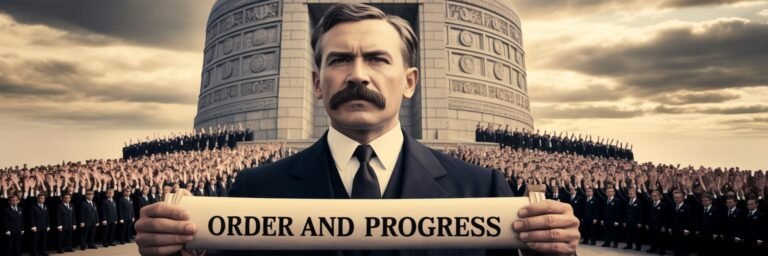INTRODUCTION
The annals of history are filled with iconic figures who have shaped the trajectory of civilizations, casting long and influential shadows even after their societies have crumbled. From the rich tapestry of human history emerge characters of such magnanimous depth and complexity that they warrant both podiums of respect and pedestals of notoriety; they are the heroes and villains within the crumbling pages of lost civilizations. We delve into the enigmatic personas of these figures, from their daring exploits to their sinister machinations, attempting to paint vivid pictures against the grainy sepia of forgotten times.
HISTORICAL BACKGROUND
Taking a step back into the ancient corridors of time, seeped in mystery and intrigue, we visit the overgrown temples of the Maya, the stark ruins of the Indus Valley, and the windswept remnants of Easter Island. These civilizations, opulent in their prime and shrouded in enigma in their demise, formed the stages for our colorful protagonists.
Our first hero, the Maya king Pakal the Great, is renowned for his monumental building projects and military victories during the Classic Maya period. From discrepancy-filled inscriptions on his tomb at the magnificent Palenque to the supernatural prowess accredited to him in indigenous oral history, Pakal’s life is a fascinating tapestry of facts and myths. Elsewhere, in the advanced city layouts of the Indus Valley civilization, a villainous figure named the ‘Priest King’ is whispered into existence by the scant remnants of artifacts and seals.
On Easter Island, we pivot our gaze to the Birdman Cult leaders, revered as heroes by some yet construed as villains by skeptics. They represented the ceremonial tradition of the Tangata Manu (Birdman), fundamentally shaping the late period of the Rapa Nui civilization.
THEORIES AND INTERPRETATIONS
Pakal’s greatness is strongly substantiated in Maya glyphs and imagery, with accounts alluding to his ascension to the throne at twelve and a 68-year reign marked by architectural brilliance and military might. Nevertheless, theories often blend with dark mysticism—histories of a time-traveling god-king who harnessed otherworldly technology, a notion propagated by ancient astronaut theorists.
The Priest King, however, lurks in the shadowy corners of archaeology, epitomized by a composite seal impression depicting a stern figure adorned in elaborate attire. Scholars suggest he may have played a crucial authoritarian role, which some interpret as exploitative, thus ascribing his potential villainy.
Interpreting the Birdman Cult leaders as either heroes or villains is largely contingent on one’s perspective. As holders of spiritual power, they symbolize religious devotion. Still, their potential involvement in the ecological destruction of Easter Island casts a critical pallor on their legacy.
MYSTERIES AND CONTROVERSIES
Mysteries wrap our protagonists like ancient cloth, obscuring the line between the human and the divine. Controversially, Pakal’s sarcophagus lid has been conjectured to depict an ancient astronaut, suggesting possible alien influence, though mainstream archaeologists see this as a fusion of Maya cosmology and symbolic death.
The Priest King is a mystery himself, as the egalitarian Harappan society wasn’t believed to harbor a dominant figurehead. His assumed position directly contradicts this, thus fuelling controversies around socio-political structures in the Indus Valley civilization.
The Birdman Cult leaders, too, ensnare controversy. Were they merely ceremonial figureheads unable to prevent deforestation, or did they deliberately indulge in the depletion of resources for their personal power, eventually catalyzing collapse?
SYMBOLISM AND CULTURAL SIGNIFICANCE
Pakal and his tomb evoke Maya beliefs in the divine right of kings and the cyclical nature of life and death. Similarly, the Priest King’s image could hint at religious authority and the centrality of ritual in the Indus Valley society.
Birdman Cult leaders embody the cultural shift from monument building to religious fervor in the face of dwindling resources. They also illustrate the Rapa Nui’s resilience and changing priorities, demonstrating how a society can adapt amidst ecological precariousness.
MODERN INVESTIGATIONS
Modern archaeological methods have given fresh insights into these figures. Epigraphic readings have unveiled more about Pakal’s reign. Satellite imagery and Indus script decryption attempt to ascertain the actual role of the Priest King. Carbon dating of bird bones on Easter Island contributes to our understanding of the Birdman Cult leaders.
Yet, these methods, with their scientific rigor, have also ignited debates and intensified the existing mysteries that charge the aura of our central characters, allowing for reinterpretation and the recontextualization of their roles.
LEGACY AND CONCLUSION
Our exploration of the heroes and villains of lost civilizations does more than fostering an appreciation of historical narratives. It implicates us in the process of uncovering, reimagining, and assimilating our shared past, illuminating civilization’s complexities.
Pakal the Great, the Priest King, and the Birdman Cult leaders stand as symbols, their personas altered by time, interpretation, and the mirage of mystical tales breathed into them. As tour guides to their splendorous and forsaken realms, they compel us to appreciate the cyclical nature of civilization–a testament of human adaptability and resilience amidst the unforgiving sands of time.
For in the relentless journey of history, one man’s hero is another man’s villain, and today’s empire is tomorrow’s ruin. And thus, the lost civilizations and their influential personas continue to ignite our imaginations, serving as mirrors reflecting the triumphs, trials, and tragedies of our shared human story, forever etched beneath the dust of fallen empires.

